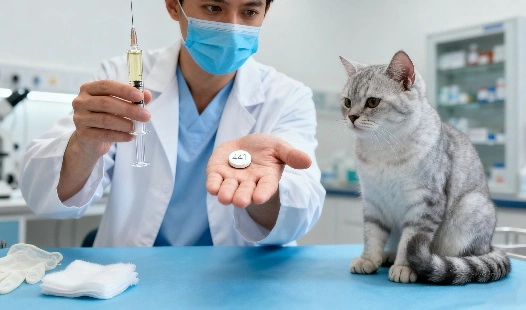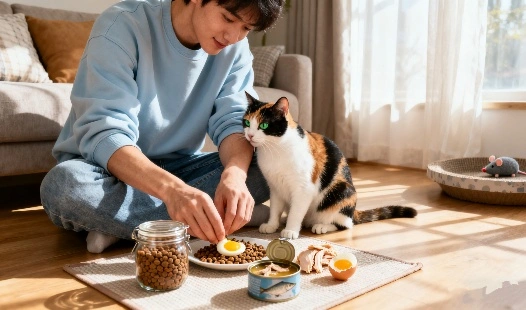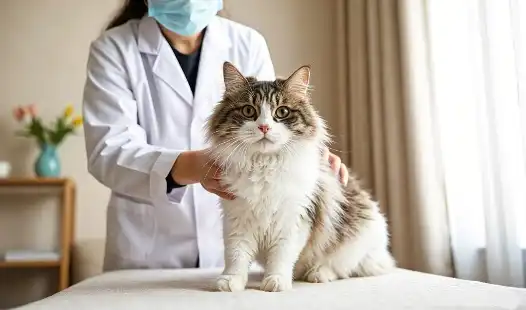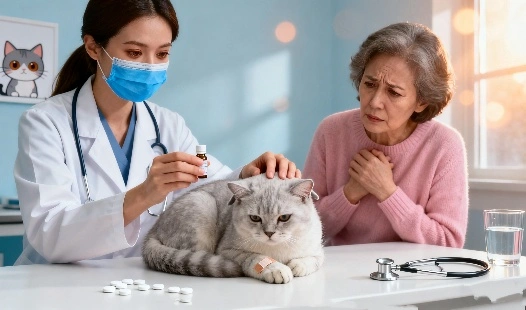What Is the Cost of FIP Treatment? A Breakdown for Cat Owners
Traditional vs. Experimental Therapies: Price Comparison
One of the most deadly and heartbreaking diseases affecting cats worldwide is Feline Infectious Peritonitis (FIP), a condition caused by a mutation of the feline coronavirus that leads to severe inflammation and organ damage. Because the disease often progresses rapidly and requires intensive medical care, it is essential for cat owners to be fully aware of the potential expenses associated with GS-441524 FIP treatment in order to make informed decisions about their pets' health and future. The total cost can vary widely depending on factors such as the type of treatment chosen, the stage of the disease, and the duration of therapy. This comprehensive guide will explore every aspect of FIP treatment — from conventional veterinary care and innovative alternative therapies to experimental options, unexpected costs, and available financial support — helping owners plan ahead and provide the best possible care for their beloved companions.
|
|
|
Traditional vs. Experimental Therapies: Price Comparison
When it comes to treating FIP, cat owners have two main options: traditional supportive care and experimental antiviral therapies. Let's break down the costs associated with each approach.
Traditional Supportive Care
Traditional supportive care for FIP typically focuses on managing symptoms and improving the cat's quality of life. The costs involved may include:
- Veterinary consultations: $50-$200 per visit
- Diagnostic tests (blood work, imaging): $200-$500
- Fluid therapy: $50-$100 per treatment
- Immunosuppressive medications: $50-$150 per month
- Nutritional supplements: $20-$50 per month
Total estimated cost for traditional supportive care: $500-$2,000 per month
Experimental Antiviral Therapies
Experimental treatments, such as those using GS-441524, have shown promising results in treating FIP. However, these therapies come with their own set of costs:
- GS-441524 medication: $1,500-$4,000 for a 12-week course
- Administration supplies (syringes, needles): $50-$100
- Monitoring blood work: $200-$400 per month
- Follow-up veterinary visits: $100-$300 per month
Total estimated cost for experimental antiviral therapy: $3,000-$7,000 for a complete treatment course
|
|
|
|
Hidden Costs: Beyond Medication Expenses
When considering the overall cost of FIP treatment, it's important to factor in additional expenses that may not be immediately apparent.
Time Investment
Treating a cat with FIP requires a significant time commitment from owners. This may include:
- Daily medication administration
- Frequent veterinary visits
- Monitoring and recording symptoms
While not a direct financial cost, the time investment can impact work schedules and personal commitments.
Emotional Toll
The emotional stress of caring for a cat with FIP can be substantial. Some owners may benefit from:
- Counseling services: $50-$150 per session
- Support group memberships: $0-$50 per year
Home Care Supplies
Additional supplies for home care may include:
- Special bedding: $30-$100
- Feeding supplies: $20-$50
- Cleaning products: $30-$60 per month
Potential Complications
In some cases, complications may arise during treatment, leading to additional costs:
- Emergency veterinary care: $500-$2,000 per incident
- Specialized diagnostics: $300-$1,000
- Hospitalization: $500-$1,500 per day
Financial Aid Options for FIP Treatment
The high cost of FIP treatment can be daunting for many cat owners. Fortunately, there are several financial aid options available to help offset expenses.
Pet Insurance
While many pet insurance policies don't cover pre-existing conditions, some may offer coverage for FIP treatment if the policy was in place before diagnosis. Monthly premiums can range from $20 to $100, depending on the level of coverage.
Veterinary Payment Plans
Some veterinary clinics offer payment plans that allow owners to spread the cost of treatment over several months. Terms vary, but this can make expensive treatments more manageable.
Crowdfunding
Platforms like GoFundMe or YouCaring allow pet owners to create fundraising campaigns for their cat's medical expenses. Success rates vary, but some owners have raised substantial amounts to cover FIP treatment costs.
Non-Profit Organizations
Several non-profit organizations provide financial assistance for pet medical care. Examples include:
- The Pet Fund: Offers grants for non-basic, non-urgent care
- RedRover Relief: Provides grants for urgent and emergency care
- Bow Wow Buddies Foundation: Offers grants up to $2,500 for necessary medical care
Clinical Trials
Participating in clinical trials for new FIP treatments can significantly reduce costs. However, availability is limited, and eligibility criteria may be strict.
Conclusion
The cost of FIP treatment can be substantial, ranging from $3,000 to $10,000 or more for a complete course of therapy. While experimental treatments like GS-441524 offer hope for better outcomes, they come with a higher price tag compared to traditional supportive care. Cat owners should carefully consider all expenses, including hidden costs, when planning for FIP treatment.
Exploring financial aid options and discussing payment plans with veterinarians can help make treatment more accessible. Ultimately, the decision to pursue FIP treatment should balance financial considerations with the potential for improved quality of life and survival for your feline companion.
|
|
|
FAQ
1. Q: Is FIP treatment covered by pet insurance?
A: Coverage varies by policy. Some pet insurance plans may cover FIP treatment if the policy was in place before diagnosis. Always check with your insurance provider for specific coverage details.
2. Q: How long does FIP treatment typically last?
A: Treatment duration varies, but experimental antiviral therapies like GS-441524 typically require a 12-week course. Some cats may need extended treatment periods depending on their response.
3. Q: Are there any alternatives to expensive FIP treatments?
A: While experimental treatments offer the best chance for recovery, some owners opt for supportive care to manage symptoms and improve quality of life when more aggressive treatments are not feasible. Discuss all options with your veterinarian to determine the best approach for your cat.
Discover Affordable FIP Treatment Solutions with BLOOM TECH
Our team at BLOOM TECH is cognisant of the fact that FIP treatment might be too expensive for some cat owners. For that reason, we will not rest until we provide FIP treatment options that are both successful and affordable. To make sure our GS-441524 products are safe and effective for your cat, we use stringent quality control techniques throughout manufacturing.
We want to make FIP treatment more accessible to cat owners globally with our affordable pricing and bulk buy options. Whenever you or your cat needs advice or comfort during treatment, our team of specialists is here 24/7 to help. Your cat deserves the best care, and you shouldn't allow the expense of FIP treatment prevent you from providing it. Contact us today at Sales@bloomtechz.com to learn more about our affordable FIP treatment options and how we can help you navigate this challenging time.
BLOOM TECH: Your trusted GS-441524 manufacturer for effective and affordable FIP treatment solutions.
References
1. Pedersen, N.C. (2019). "Feline Infectious Peritonitis: Insights into Pathogenesis and Clinical Management." Journal of Feline Medicine and Surgery, 21(3), 245-258.
2. Addie, D.D. (2020). "Feline Infectious Peritonitis: New Approaches to an Old Disease." Veterinary Clinics of North America: Small Animal Practice, 50(5), 1045-1066.
3. Murphy, B.G., et al. (2018). "The nucleoside analog GS-441524 strongly inhibits feline infectious peritonitis (FIP) virus in tissue culture and experimental cat infection studies." Veterinary Microbiology, 219, 226-233.
4. Izes, A.M., et al. (2020). "Current and Emerging Therapies for Feline Infectious Peritonitis." Veterinary Clinics of North America: Small Animal Practice, 50(5), 1067-1081.

Echo
9 years of experience in chemical articles; Doctoral degree; Organic Chemistry major; R&D-4 Dept; Technology support; R&D engineer
Anticipating your Business & Technology support inquiry
Please send us the products that interest you, and we will provide you with one-on-one service
Recommended Blog
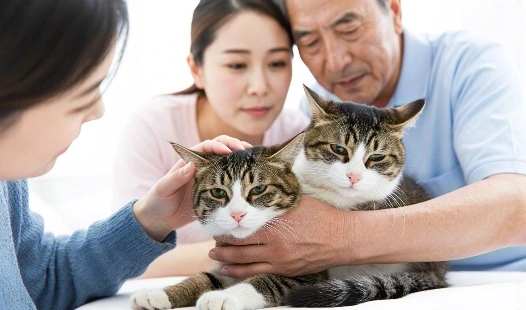
Why Is My Cat's Condition Fluctuating During GS-441524 Treatment?







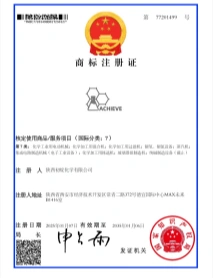

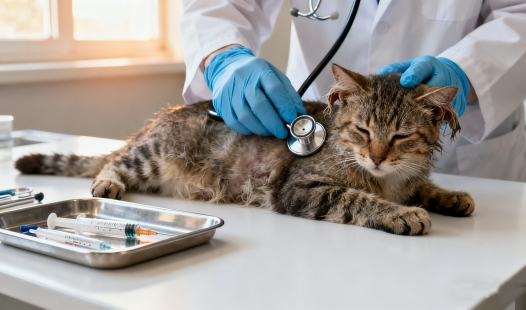
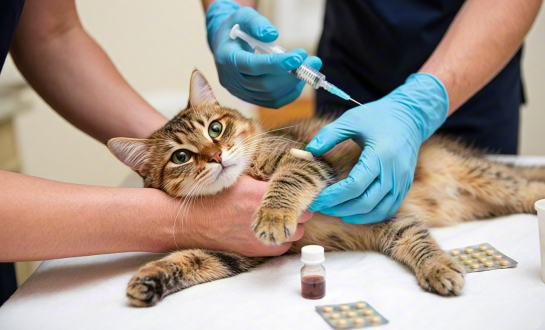
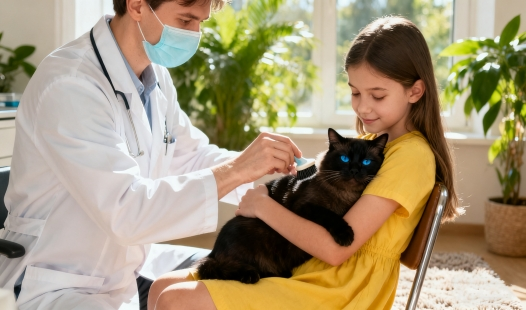
_副本_1759196595724.webp)
